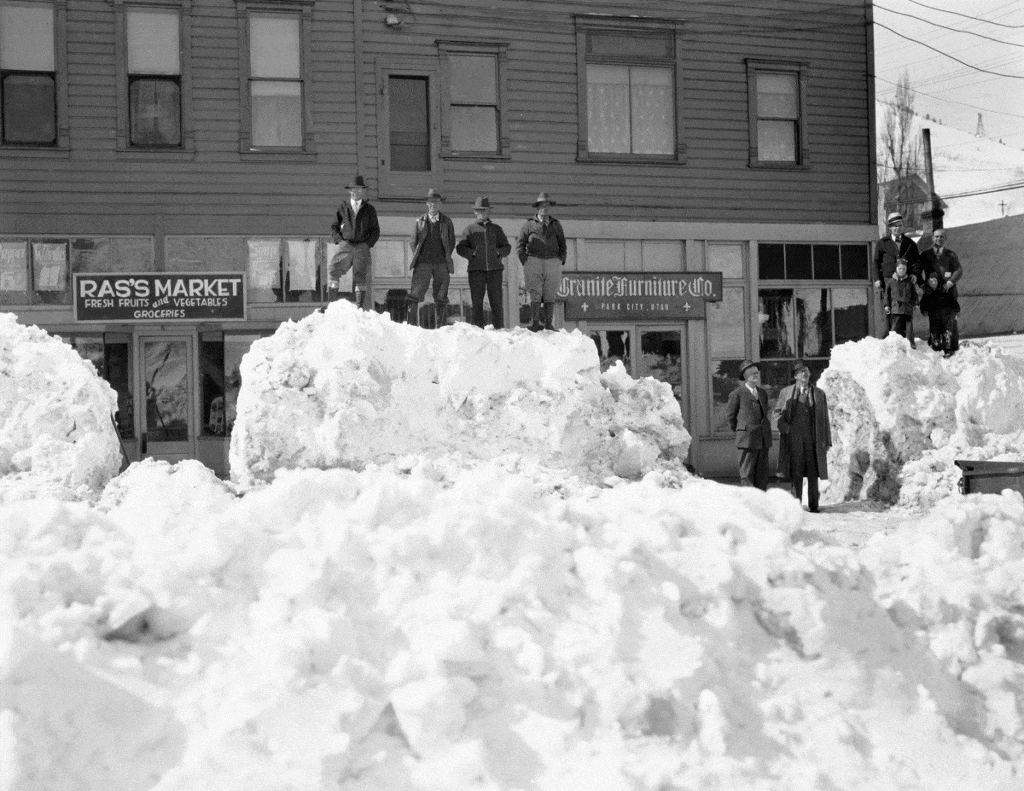In a big snow year like this one, those of us who live in mountains know the hazards of avalanches. They crash down without warning, at high, destructive speeds. Anyone unlucky enough to be in the path stands a poor chance of survival.
Now, avalanche victims tend to be those who are in the backcountry on purpose—lured out by spectacular scenes of untrammeled snow. Utahans put themselves at risk every year in pursuit of powder. But in an earlier time, victims of avalanches put themselves in harm’s way because they had to, living and working high on the Wasatch mountainsides.
Early miners heightened the danger unwittingly by clear cutting the hillsides to provide timber to shore up mine tunnels and to construct mine buildings and cabins. Without trees, snow accumulating on steep slopes did not have anchors to hold it in place and prevent slides. While hillsides above Park City are forested now with second growth timber, early pictures show slopes above town denuded of vegetation.
The earliest recorded snow slide, and still one of the most tragic, hit early in the morning hours of February 18, 1884. A storm put down three feet of snow. At about four that morning, snow started moving with a rumble, gathering speed and smashing through the Reich and Harris cabins in Ontario Canyon, just west of the Ontario Mine. Searchers scrambled to the rubble, but found three of the Reich children suffocated in the ruins of their cabin, and also found the body of Mrs. Harris.
A month later, slides took out mine buildings at Lake Flat—today’s Silver Lake area at Deer Valley—causing many families who lived there to move down below to Park City proper for their own safety. In January 1886, the snow slid in Empire Canyon, killing three at the Peterson home. Before the month ended, another harrowing avalanche buried a three wagon caravan of ore hauling rigs. Two men were on each wagon. When the wagons failed to arrive in town, a telephone call to the mine confirmed that workers there had heard the roar of an avalanche shortly after the wagons left. Within a half hour 200 men were digging for survivors. One, J.C. Cleveland, survived by clinging to the top of a tree where he’d landed. Another, Sidney Nichols was found half buried but alive. The other four teamsters were dead. All of the horses managed to survive.
Stories like these continued in big snow years into the 1920s. By then builders knew on which areas to avoid building, and a second growth of trees and brush had taken hold to anchor snow in place.
Now ski resorts stabilize slopes within their boundaries with explosive charges and other practices. Backcountry skiers pay attention to avalanche center forecasts and learn how to perform self-rescues. There are still avalanche deaths in big snow years like this one, but they are no longer as risky to the average Park City resident. Visit the Park City Museum for more stories.

Credit: Park City Historical So9ciety and Museum, Pop Jenks Collection